AI Tools for Effective Customer Acquisition Strategies
A recent report by the Interactive Advertising Bureau (IAB) reveals that nearly 90% of advertisers are now utilizing generative AI to create video ads, with projections indicating that AI-generated content will constitute 40% of all video ads by 2026.
This shift highlights the increasing reliance on AI tools for creating user acquisition ads that generate engaging content, thereby enhancing user engagement and driving app installs. Traditional methods of ad creation are becoming increasingly inefficient and costly. In contrast, AI-powered tools enable the rapid generation and optimization of ad creatives, resulting in more personalized and effective campaigns.
In this blog, we'll explore the AI tools available in 2025 that can streamline your ad creation process, enhance targeting precision, and ultimately improve your return on ad spend.
What are AI Tools for User Acquisition Ads?
They’re software applications that use machine learning to craft, test, and fine-tune ad creatives, such as images, videos, headlines, and body copy, so your campaigns perform better from day one.
Core functions
Dynamic creative optimization: These tools assemble ad elements proactively based on signals such as user behavior and device type, and they combine and match images, text, and calls-to-action to produce the most effective variation for each viewer. That means each person sees a version tuned to what drives installs.
Predictive targeting: AI platforms analyze data from campaign history or user activity to predict who’s most likely to install or engage. Then they automatically push ads to those users at the best time. With AI tools for user acquisition ads, you can lower your cost‑per‑install and improve return on ad spend through smarter delivery.
Automated A/B testing: Instead of manually running tests, AI tools for user acquisition ads generate and test multiple versions at once. It tracks which versions perform best, then reallocates traffic and budget to top performers without requiring constant adjustments.
Why does it matter in 2025?
Digital ad costs continue to rise. AI tools for user acquisition ads enable you to quickly generate and test multiple ad variations, allowing for faster iterations and more cost-effective campaigns.
Hyper‑targeted creatives speak directly to each player segment, boosting install rates by matching ads to what users care about.
Automated optimization reallocates spend to top performers in real-time, reducing waste and maximizing installs from every dollar.
Major platforms are investing heavily: Meta is expanding its AI-driven ad creation and targeting capabilities, with plans for full implementation by 2026.
Faster testing cycles and real‑time budget shifts mean you’re not reacting to the market; you’re often a step ahead of algorithm updates and shifting player habits.
By using AI effectively, your team can run ad campaigns that adapt in real-time to user signals.
Now that it’s clear why AI tools matter in ad creation, the next step is knowing what features help you get results.
Also Read: Enhancing Creative Campaigns with AI: Top Strategies for Performance Marketing
Essential AI Tool Features for Creating UA Ads in 2025
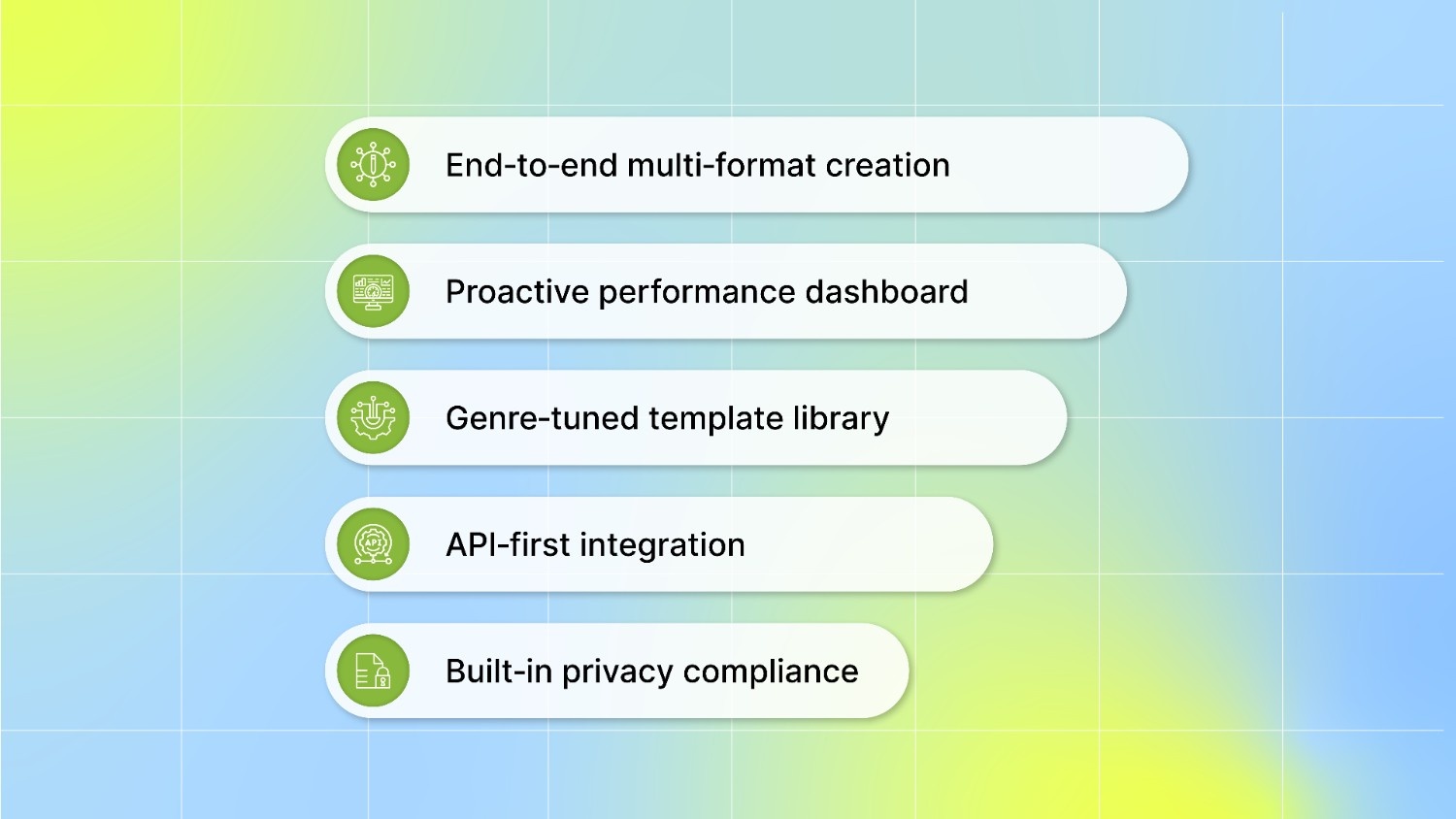
Here’s what to look for to make sure the tool fits your needs, works at scale, and keeps your campaigns running smoothly in 2025:
1. End‑to‑end multi‑format creation
Ensure the tool can cater to all your creative needs in one place, including short video clips, interactive playable demos, and static image banners. That way, you won’t need separate vendors or extra design steps when you want to test different formats.
2. Proactive performance dashboard
You want instant feedback on how each ad is doing. Look for built-in analytics that display impressions, clicks, installs, and cost metrics directly in the same interface where you create your ads. This helps you spot underperformers fast and reallocate your budget without exporting spreadsheets.
3. Genre‑tuned template library
Your game’s style matters. A good AI tool offers ready-to-use templates that match hyper-casual, mid-core, and hardcore game genres. These templates come with recommended layouts, copy prompts, and sizing rules, ensuring your ads look polished and strike the right tone for your audience.
4. API‑first integration
Avoid manual uploads. Choose a platform with open APIs that let you push new creative versions directly into your ad‑buying system or mobile measurement partner. This keeps your workflow lean, reduces human error, and enables you to automate large‑scale tests.
5. Built‑in privacy compliance
By 2025, every ad solution must play by Apple’s and Android’s rules. Your tool should support Apple’s SKAdNetwork (now called AdAttributionKit) for privacy‑safe install and event measurement. On Android, it must comply with the privacy manifest and target-level requirements introduced for Android 14 and above. That way, you won’t have to patch together add‑ons or risk policy violations.
By making sure your AI partner ticks these boxes, you’ll launch more variations in less time, stay on top of what’s working, and avoid any compliance headaches down the line.
Next up, we’ll explore some of the top AI platforms built around these exact features.
Also Read: WWDC 2025 AdAttributionKit Update: 6 Major Improvements
Top AI Tools to Create UA Ads in 2025
AI tools make ad creation faster and smarter. They automate tasks like testing and targeting, helping you reach the right audience without wasting resources. By utilizing AI, you can enhance the efficiency of your campaigns and achieve better results, all while staying ahead of the competition.
Rising platforms in 2025
1. Veo 3
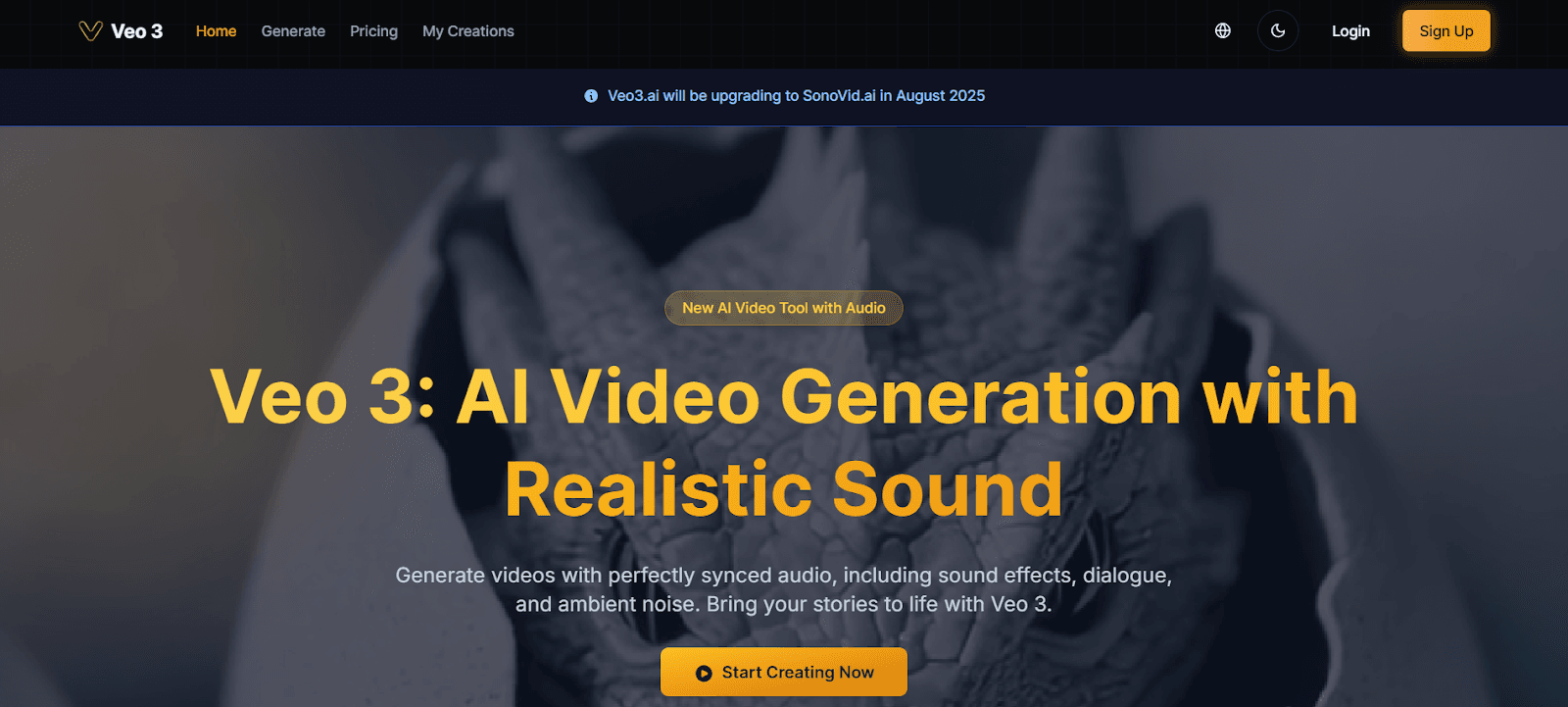
Veo 3 Veo 3, developed by Google’s DeepMind, is an AI-powered tool that generates high-quality videos from text prompts or images. They are combining both visual and audio elements in a single step for more efficient video production.
Key Features:
Native Audio Generation: Automatically adds sound effects, ambient noises, and dialogue to your videos, eliminating the need for separate audio editing tools.
Realistic Lip Sync: Ensures that character speech aligns perfectly with mouth movements, enhancing the realism of your videos.
Physics-Based Video Simulation: Simulates real-world physics to create natural motion and visuals, enhancing the authenticity of the generated content.
Multi-Input Prompts: Allows you to generate videos using text descriptions or image references, providing flexibility in content creation.
Integration with Flow App: Seamlessly combine Veo 3 with Google's Flow video editor to create cinematic clips for your campaigns.
How It Works:
Input a Prompt: Provide a text description or upload an image/photo to describe the video you want to create.
Customize Audio: Add instructions for sound effects, dialogue, or ambient noise to enhance the audio quality of your video.
Generate and Review: Let Veo 3 create your video, then preview and download your AI-generated clip.
Veo 3 is integrated with Google’s Vertex AI platform, designed for enterprise-level users looking to automate video creation.
2. Higgsfield Ads
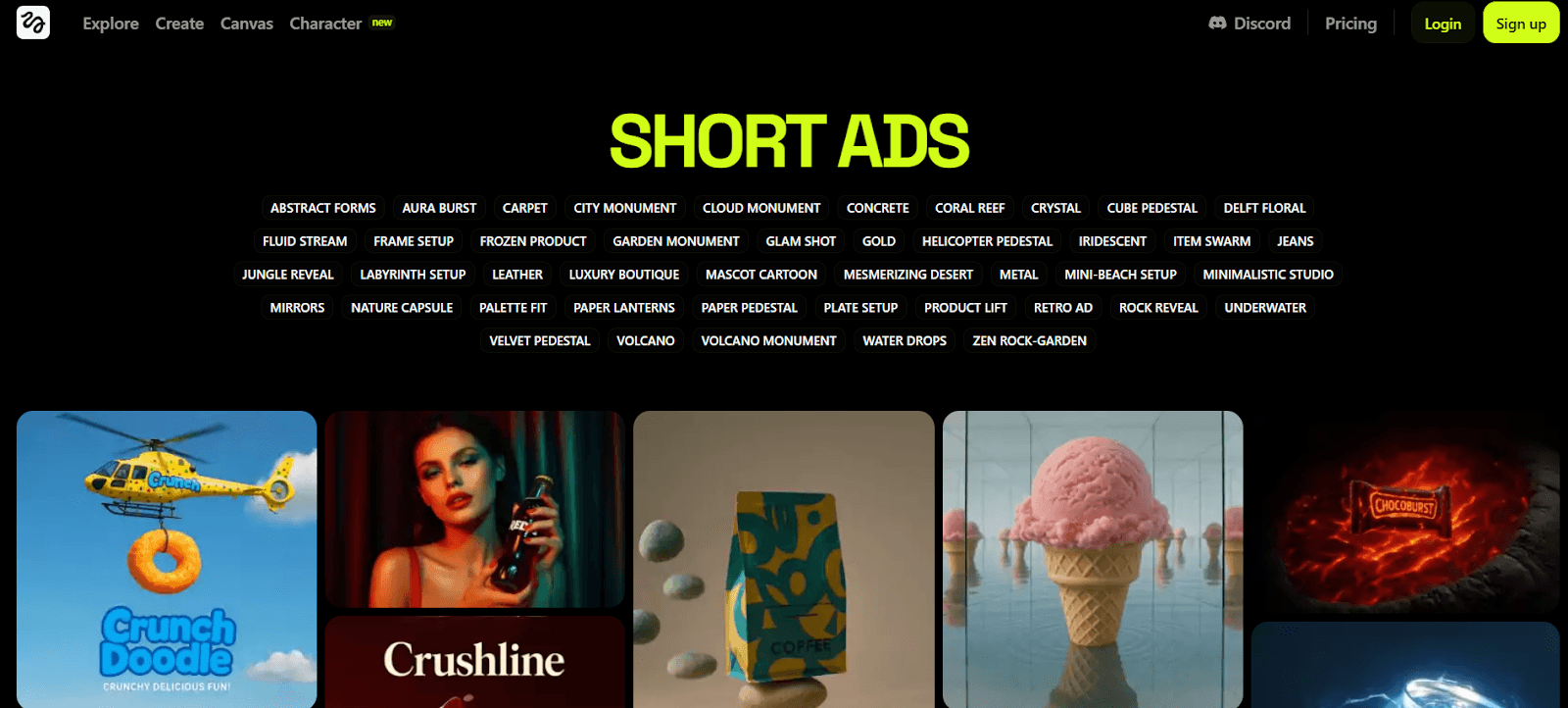
Creating professional-quality video ads no longer requires expensive equipment or a large team. With Higgsfield Ads, you can transform a single product photo into a polished video ad in just a few clicks.
Key Features:
One-Click Conversion: Upload a product image, select a template, and instantly generate a video ad.
40+ Cinematic Templates: Choose from a variety of templates like "Product on Pedestal," "In-Hand Close-Up," and "Lifestyle Freeze" to match your brand's style.
No Camera Required: The AI engine adds dynamic animations and effects, eliminating the need for live shoots.
How It Works:
Begin by uploading a high-quality image of your product.
Browse through the 40+ available templates and choose one that best fits your product and desired style.
Click to generate the video ad. The AI will apply animations, effects, and transitions to create a cinematic video.
3. Kling 2.1
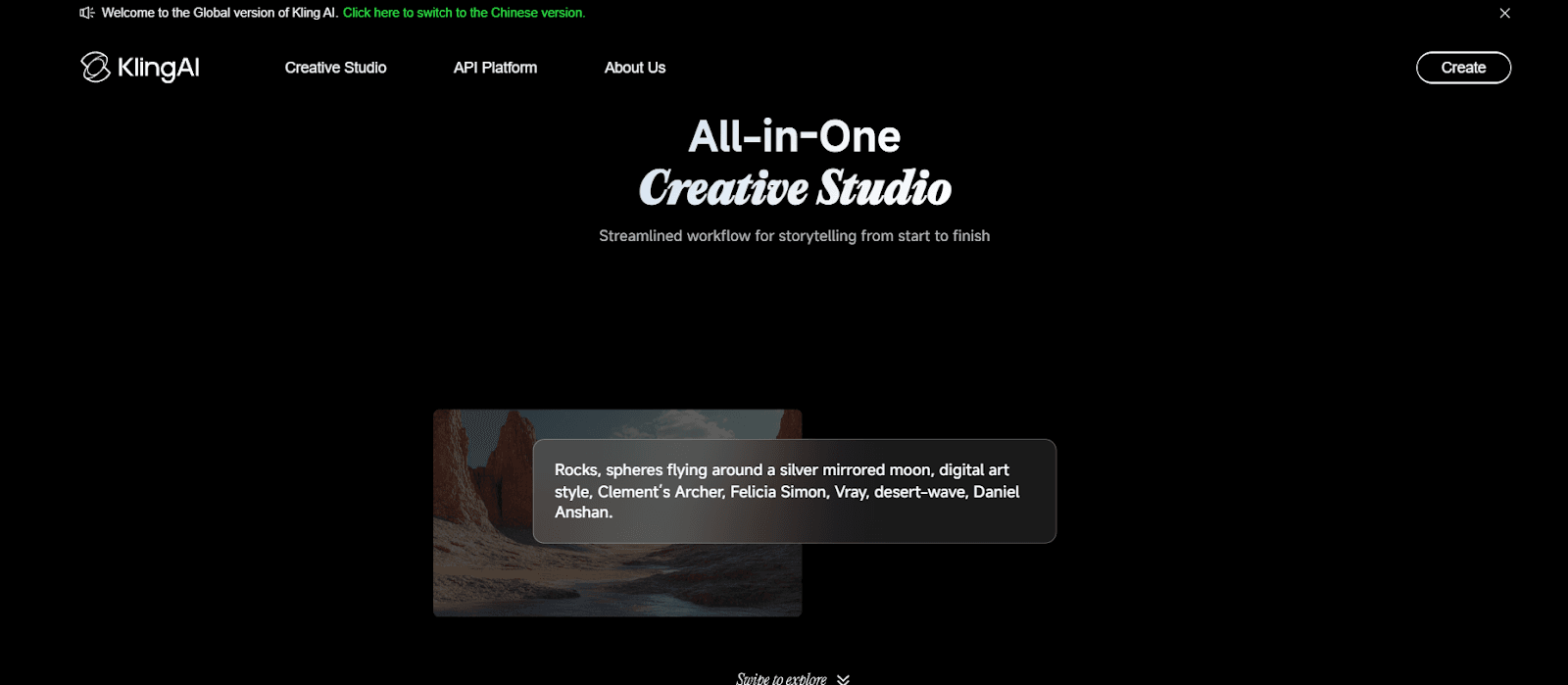
When you need pro‑level video from a single image, Kling 2.1 Pro, launched in May 2025, turns your visuals into short, cinematic clips that stand out in busy feeds.
Key features:
Enhanced visual fidelity: Delivers crisp, lifelike frames that grab attention in busy ad slots.
Precise camera movements: Simulates smooth pans, zooms, and tracking so you don’t spend time keyframing.
Dynamic motion control: Let you tweak speed and flow to match your campaign’s mood and pacing.
How it works:
You send your image (or prompt) and video settings to the Kling 2.1 Pro API endpoint.
The model processes inputs and renders a cohesive MP4 sequence.
You download the finished file and drop it into your UA ad builder.
4. OpenArt
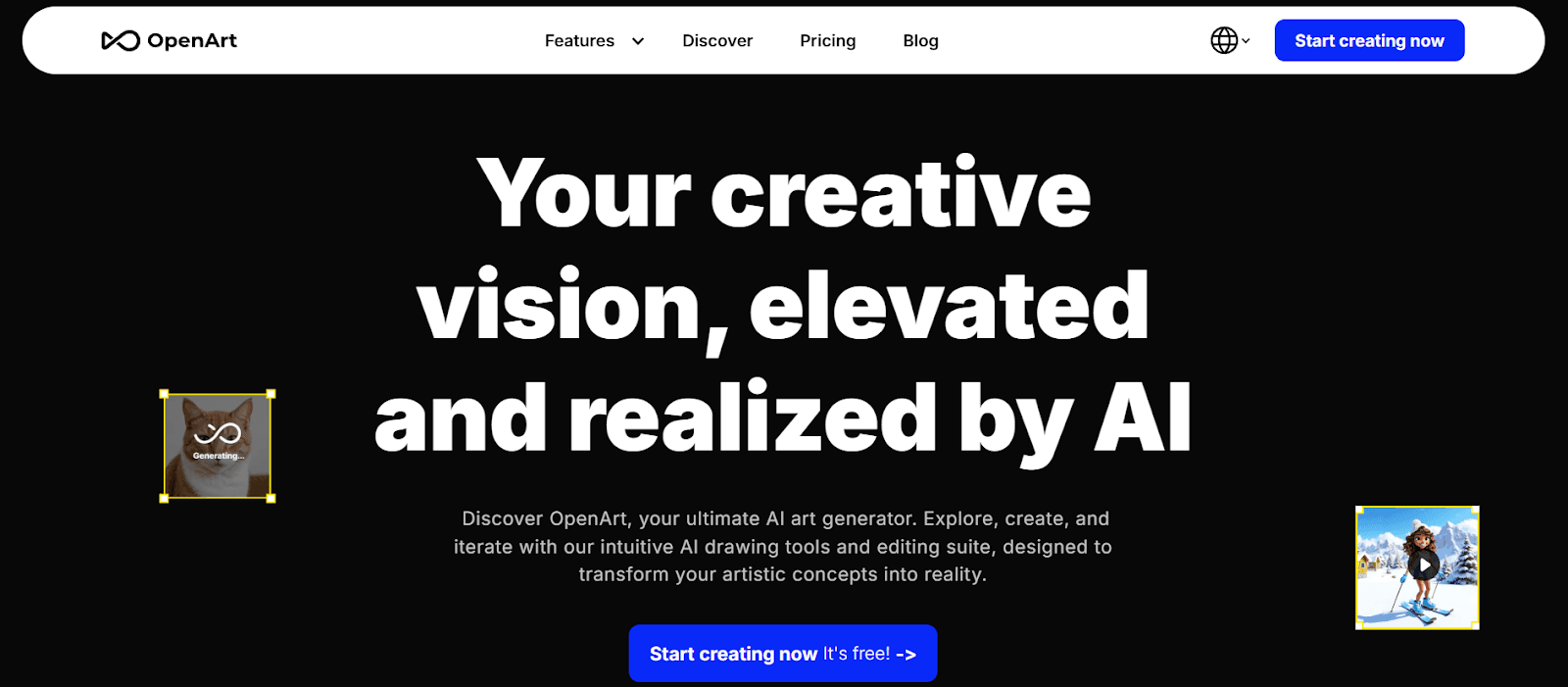
OpenArt is a cloud‑based AI creative suite that lets you turn text prompts, URLs, or images into ads and visuals you can use right away. It also supports inpainting, upscaling, and training your custom models to match your brand’s look.
Key features:
FLUX Kontext model: A context‑aware generator that keeps characters and scenes consistent, ideal for product shots and campaign imagery.
100+ built‑in models and styles: Choose from photorealistic renders to artistic filters so your ads have the exact vibe you need.
Multi‑modal generation: Go from text‑to‑image or image‑to‑image. You can also do inpainting/outpainting, leverage ControlNet, or enhance faces and anime characters.
AI upscaling and editing: Instantly boost resolution 2× or 4×, utilize the Creative Upscaler for sharper details, or train a personalized model in just minutes.
How it works
Type your prompt, upload an image, or enter a URL.
Select the model you like and adjust the settings for style, resolution, and the number of passes.
Hit 'Generate,' then use inpainting or upscaling tools to refine the result.
Commonly Known Platforms
5. Poolday.ai
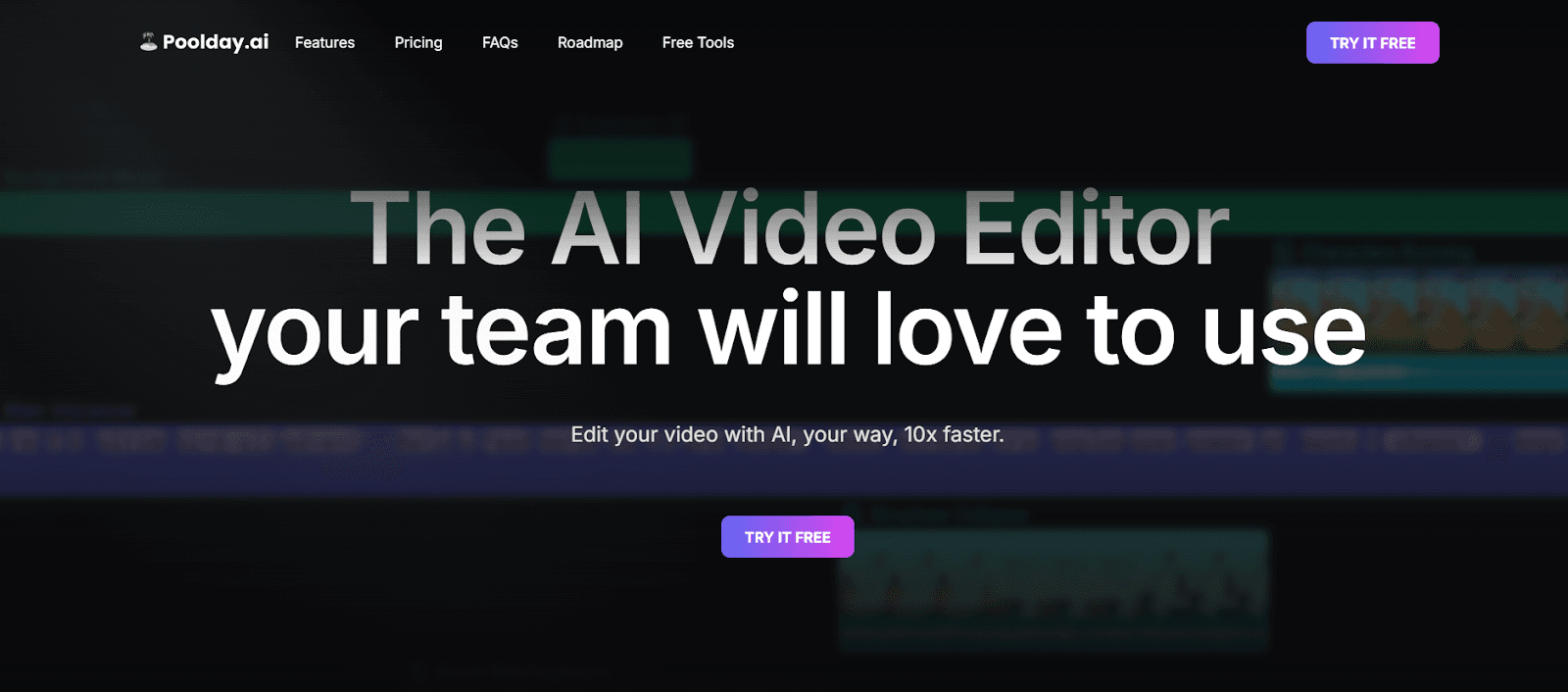
Poolday.ai is an all-in-one AI video editor that allows teams to quickly create professional AI-powered user-generated content and ad videos from scripts, URLs, or media.
Key features:
AI UGC & Actors: Generate UGC‑style testimonial ads with lifelike AI actors and custom-branded personas at scale.
AI Voiceover & Localization: Automatically create voiceovers and translate videos into 35+ languages with no extra tools.
Prompt‑Based Editing & Hook Gen: Use simple text prompts to edit videos and generate viral hooks or ad combinations instantly.
Creative Asset Management: Store, organize, and reuse templates, assets, and AI personas for consistent branding.
How it works:
Upload a script, URL, or media assets and select your creative goal (UGC‑style, cinematic, or hook‑driven).
Poolday’s AI engine processes the input to render multiple video ad variations in seconds, ready for user‑acquisition channels.
6. ChatGPT
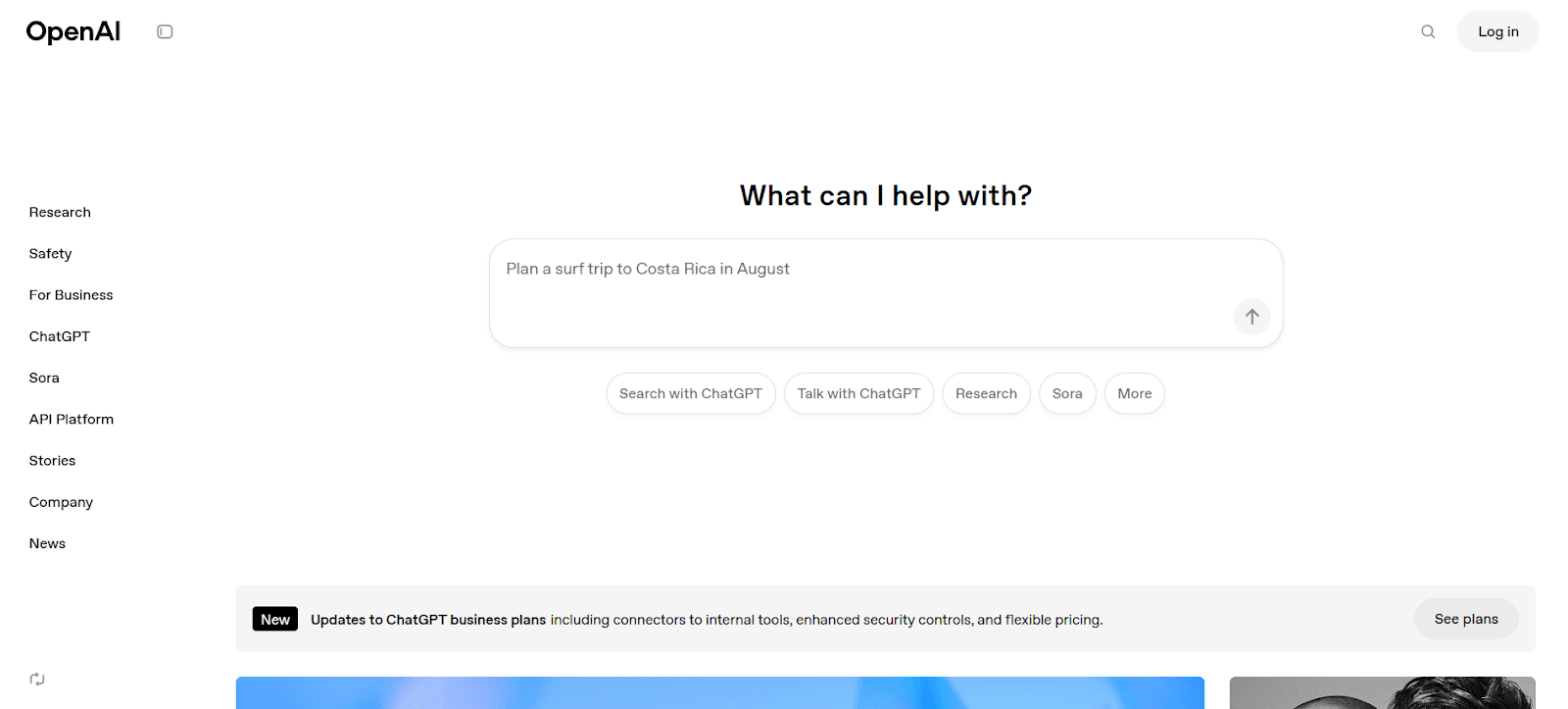
You can ask ChatGPT to draft ad headlines, write body copy, translate text, or even sketch out short video scripts in seconds. It runs on OpenAI’s latest GPT‑4o model, which natively handles text, images, and audio.
Key features:
Natural-language prompts enable you to brainstorm angles or refine existing copy with simple requests.
Plugin support enables you to integrate real-time data or calendar events for timely campaigns.
Multimodal inputs allow you to upload a product screenshot or marketing image and request text ideas based on what you display.
How it works:
Simply type an explicit request, such as “Write three punchy headlines for a puzzle game ad,” and press Enter.
If you need revisions or adjustments, ask follow-up questions to refine the response.
To connect analytics or scheduling tools, enable the relevant plugins in your ChatGPT settings and include them in your prompt for a more tailored solution.
7. HeyGen AI
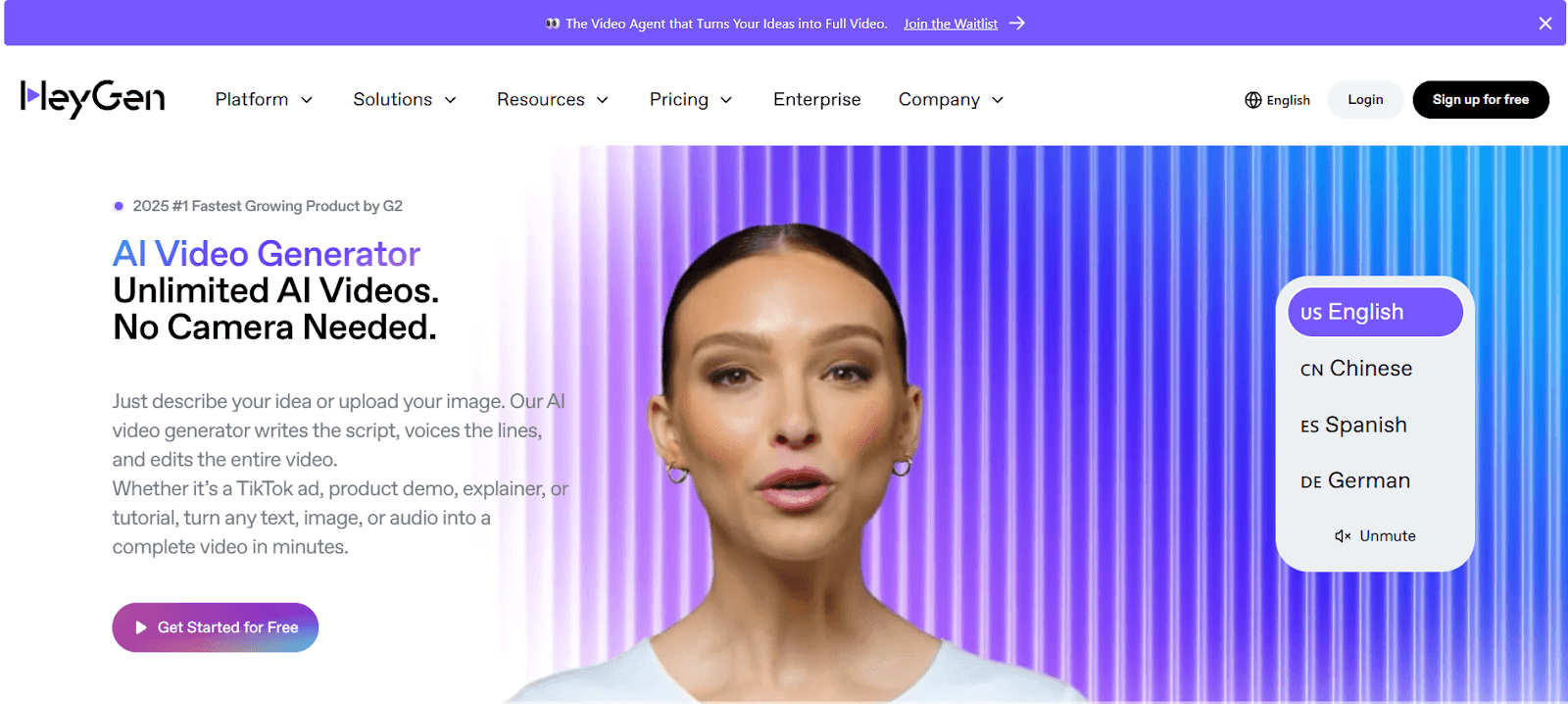
HeyGen’s platform transforms your scripts into on-brand, hyper-realistic avatar videos, requiring no camera or actors. You can generate stand‑alone avatar clips, translate them into other languages with synced lips, or build real-time interactive experiences.
Key features:
Avatar Video API: create lifelike MP4 videos of AI presenters reading your copy on demand.
Video Translate API: Automatically dub and lip-sync your ads into over 70 languages.
Interactive Avatar Streaming API (alpha): power real‑time Q&A or live demos with a WebRTC‑based avatar.
How it works:
Select or upload an avatar and voice for your video.
Submit your script to the Avatar Video API endpoint and receive a ready-to-publish MP4 video.
For translated videos, use the Video Translate API to specify target languages. For real-time interaction, open a WebSocket session with the Streaming API to stream video and audio live.
8. Runway
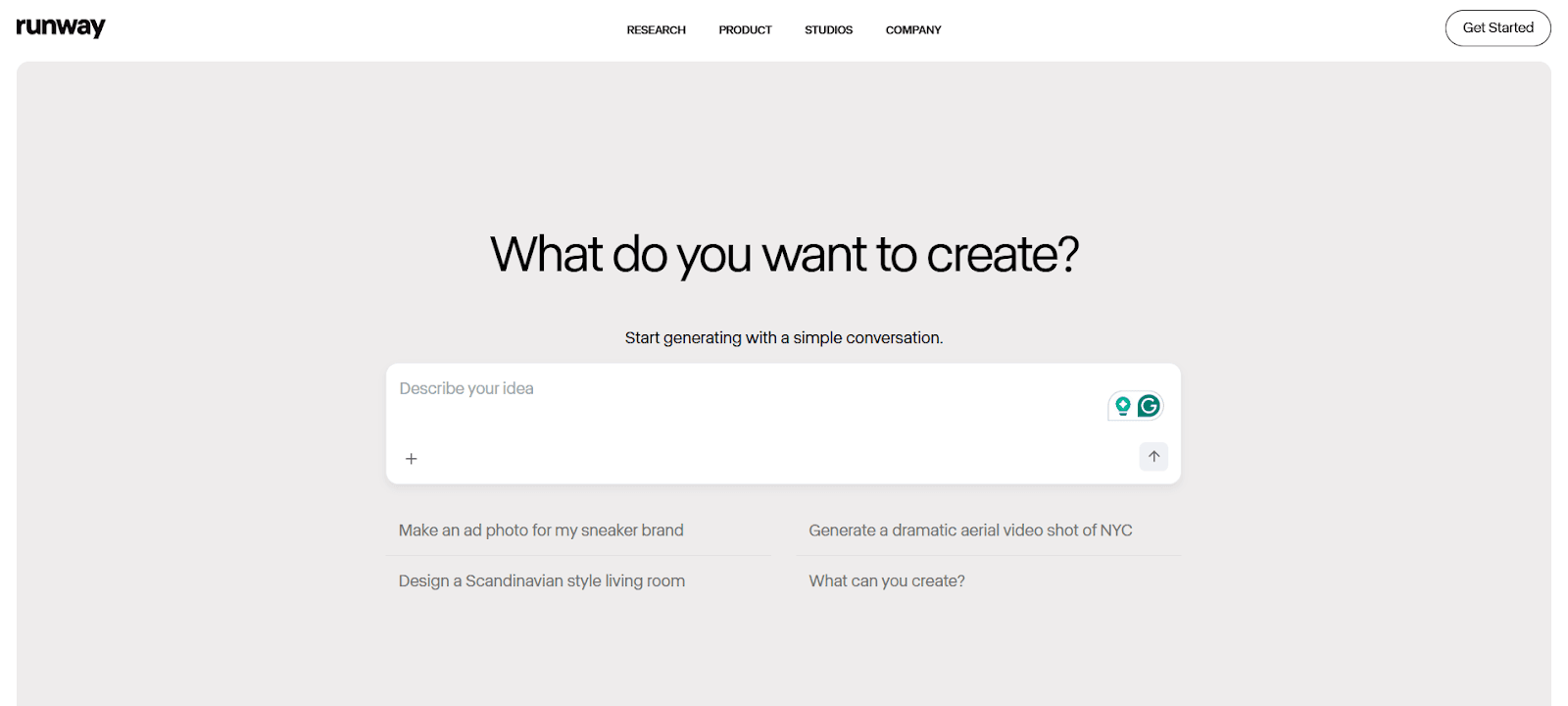
Runway ML enables you to generate and refine short ad clips directly in your browser. You can turn text prompts into 5–10‑second videos, remove or replace backgrounds without a green screen, and clean up footage with context‑aware inpainting. It also offers motion tracking, custom model training, and an API, allowing you to integrate its tools into your workflows.
Key features:
Text‑to‑Video (Gen‑3 Alpha): Create 4–10 sec clips from simple text prompts with cinematic framing and realistic motion.
Green Screen & Background Removal: Cut out subjects and swap backgrounds with a single click, eliminating the need for a physical green screen.
Inpainting & Object Removal: Erase unwanted elements across frames with AI fill.
Motion Brush & Tracking: Animate parts of a scene or have effects follow moving subjects.
Custom Model Training & API Access: Build brand‑specific AI models and integrate them via a straightforward API.
Real‑Time Collaboration: Co‑edit projects in the cloud with your team.
How it works:
Sign up and open a new video project in your browser.
Pick Gen‑3 Alpha for text‑only video or Gen‑3 Alpha Turbo if you have an input image.
Enter a clear and descriptive prompt (e.g., subject, camera angle, movement).
Choose 5 sec or 10 sec, then click Generate.
Use the Remove Background tool or Motion Brush to refine your clip.
Export your final ad in MP4 or ProRes (with transparency option).
9. Colossyan
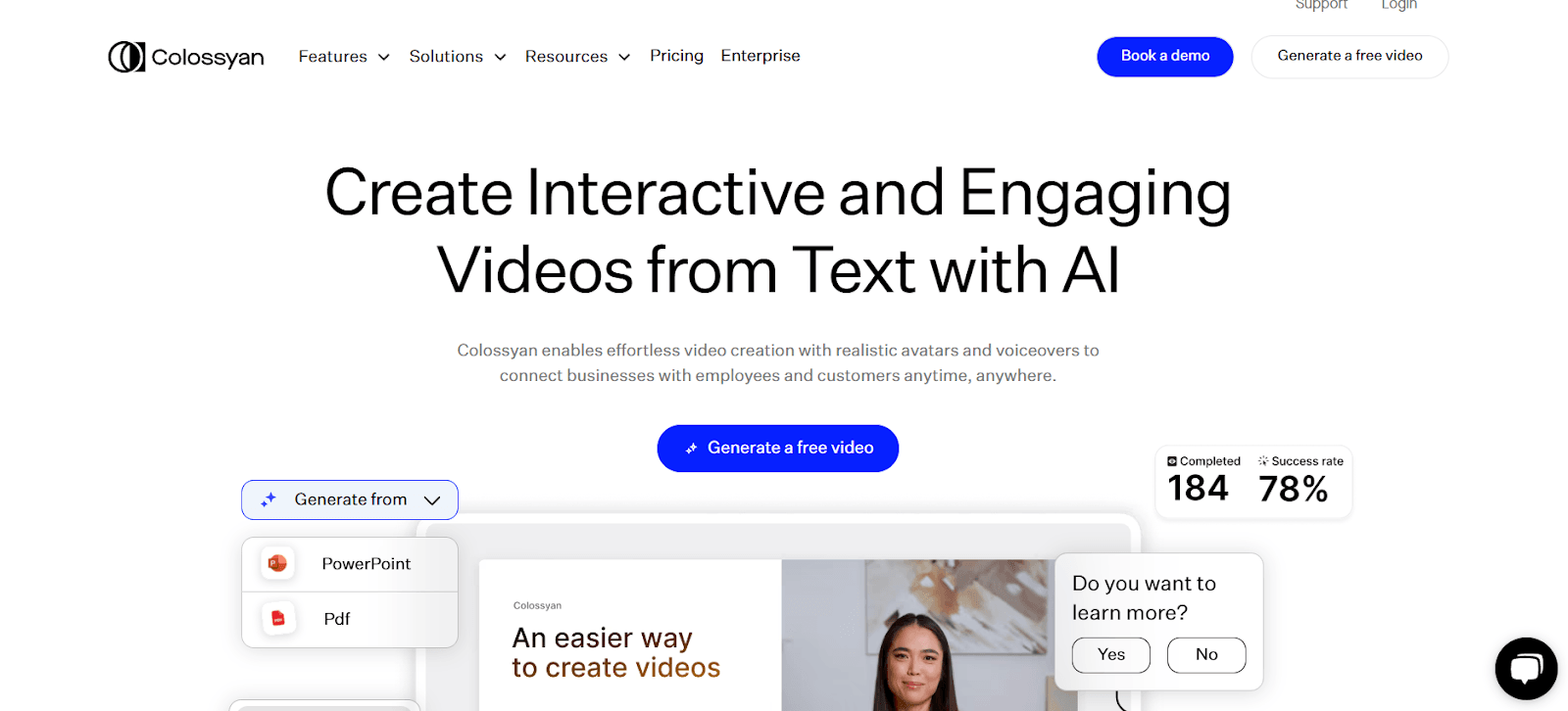
Colossyan enables you to transform scripts, PowerPoints, or PDFs into polished videos featuring realistic AI avatars and voiceovers. You don’t need cameras, actors, or editing suites, just your text and branding details.
Key features:
AI Avatars & Voices: Pick from 150 + avatars and 600 + voices in 70 + languages, or clone your voice in 30+ languages.
Text‑to‑Video Conversion: Upload scripts, slides, or docs and get a complete video in minutes.
Auto Translation & Localization: Translate and lip‑sync your video into any of 70 + languages automatically.
Interactive Elements: Add quizzes, branching scenarios, and overlays to boost viewer engagement.
Brand Kit & Templates: Utilize your logos, colors, and fonts, and select ready-made templates for a consistent visual appearance.
API Integration: Automate large‑scale video production by tapping into Colossyan’s developer APIs.
How it works:
Log in and start a new video project.
Select an avatar and voice, or upload your own to create a custom digital presenter.
Paste or upload your script, PPT, or PDF.
Hit Generate and watch Colossyan turn text into a talking‑head video.
Use translation tools to create versions for other regions.
Share your ad or download it in the desired format.
10. Lumen5
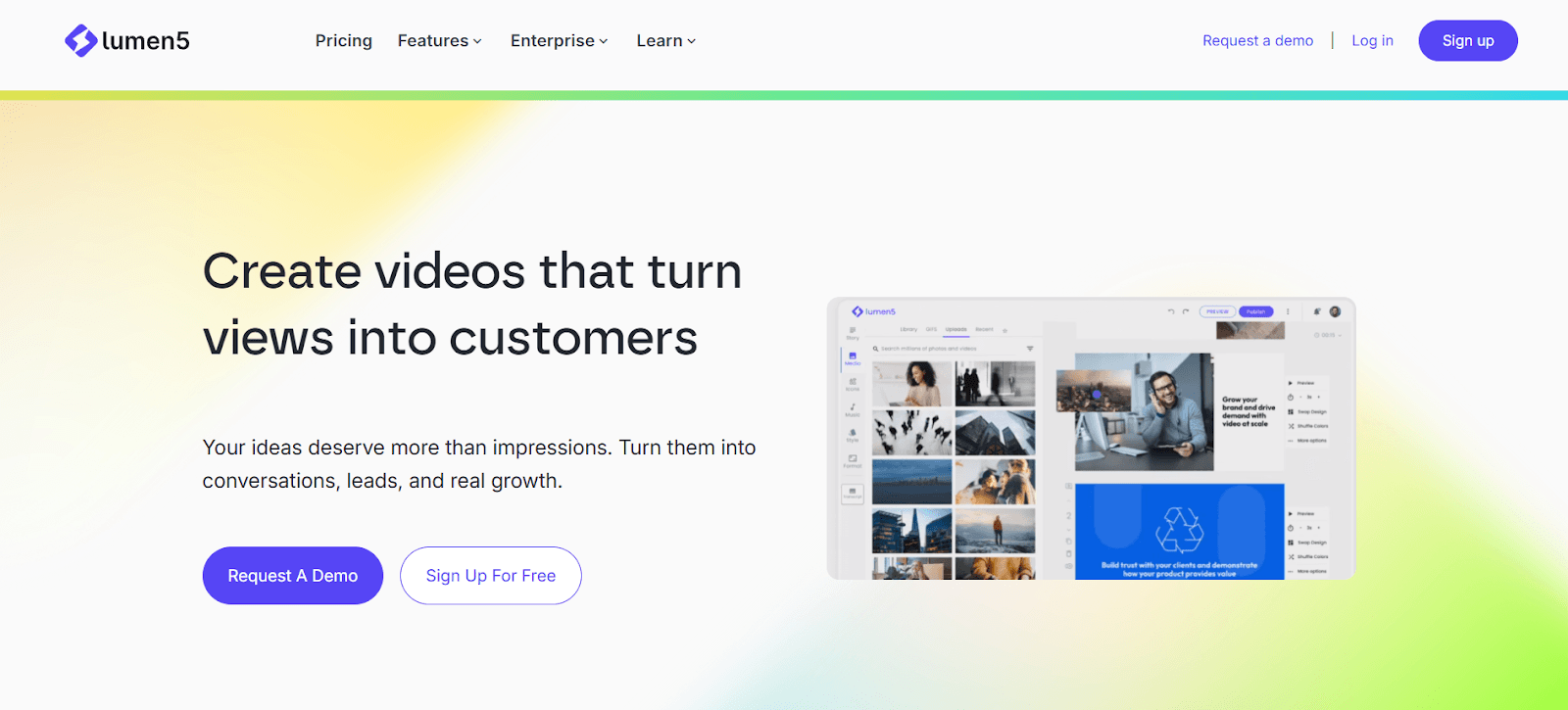
Lumen5 specializes in turning blog posts, URLs, or scripts into branded social videos. It's an AI script composer that auto‑summarizes your text into a storyboard, then matches visuals and transitions for you.
Key features:
AI‑Powered Script to Video: Paste a URL or script and get a complete video outline with suggested scenes.
Drag‑and‑Drop Editor: Fine‑tune text, visuals, timing, and transitions with an intuitive interface.
Media Library: Access millions of royalty‑free images, clips, and music directly in the platform.
Custom Templates & Branding: Save brand kits with your logo, colors, fonts, and apply them to every video.
Voiceover & Caption Support: Generate AI voiceovers, auto‑sync captions, and animated text overlays.
Social Media Optimization: Export in landscape, square, or vertical formats for any channel.
Collaboration Tools: Work with teammates in shared workspaces and gather feedback in real time.
How it works:
Log in and choose “Create new video.”
Paste your text or link, then let the AI build your scenes.
Tweak the storyboard in the editor—swap images, adjust text, or change pacing.
Add voiceovers and captions with one click.
Select your output format and download or publish directly to social platforms.
11. ElevenLabs
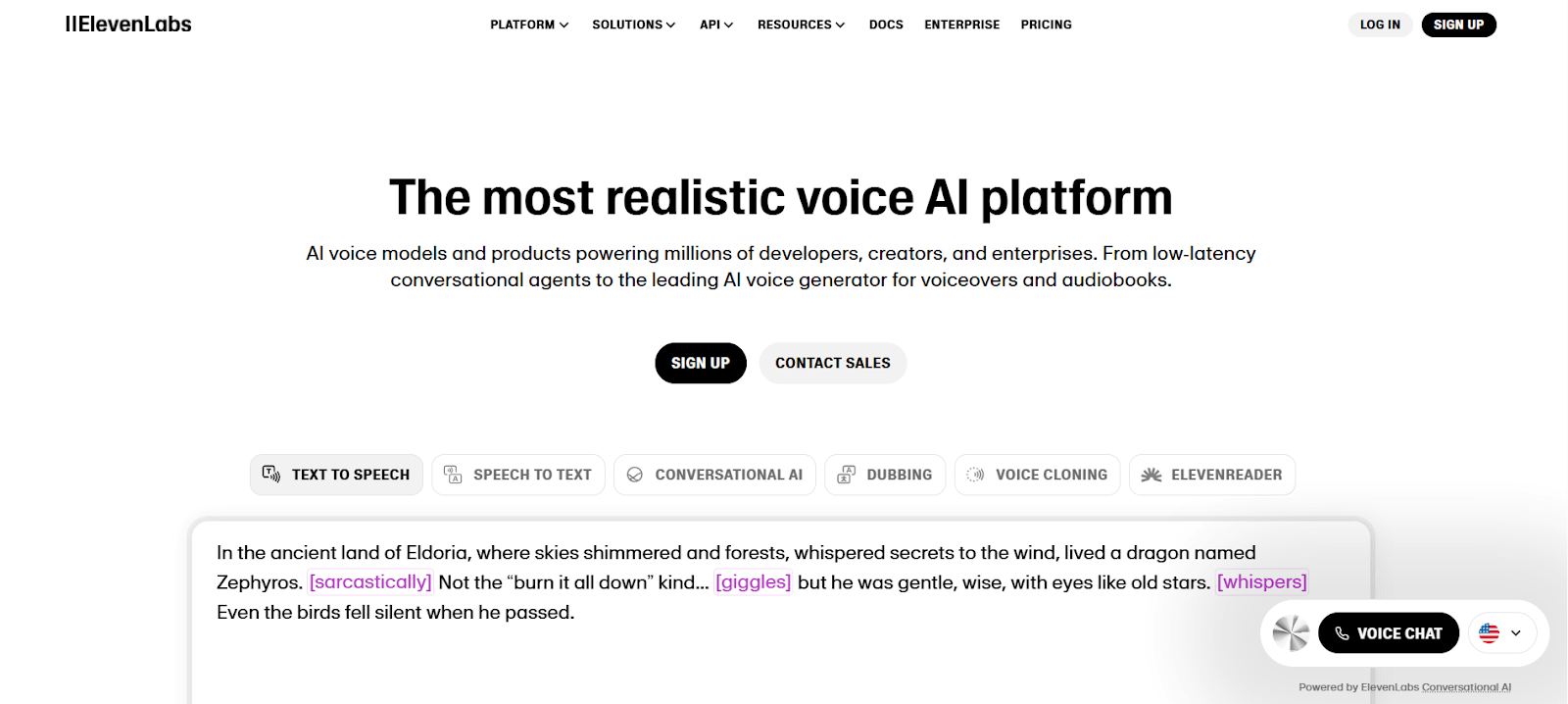
ElevenLabs Text-to-Speech (TTS) turns your scripts into lifelike audio with nuanced intonation, pacing, and emotion. Its API supports over 70 languages and multiple voice styles, allowing you to narrate global ad campaigns or power in-app voiceovers without the need for recording studios.
Key features:
Custom voice cloning: Create a branded voice from a short audio sample, then synthesize any script with that voice.
Emotive controls: Adjust tone, pacing, and emphasis to match your ad’s mood and keep viewers engaged.
Multilingual support: Generate speech in 70 + languages with the default eleven_multilingual_v2 model for realistic delivery.
Easy API integration: Plug TTS into your video pipeline or app with REST endpoints and SDKs in Python and TypeScript.
How it works:
Sign up on ElevenLabs and grab your API key.
Choose a voice ID or upload your sample for custom cloning.
Send your text to the POST /v1/text-to-speech/{voice_id} endpoint.
Include parameters for stability, clarity, or emotion tags, such as [excited], as needed.
Receive an MP3 or WAV response ready for your ad editor.
12. InVideo
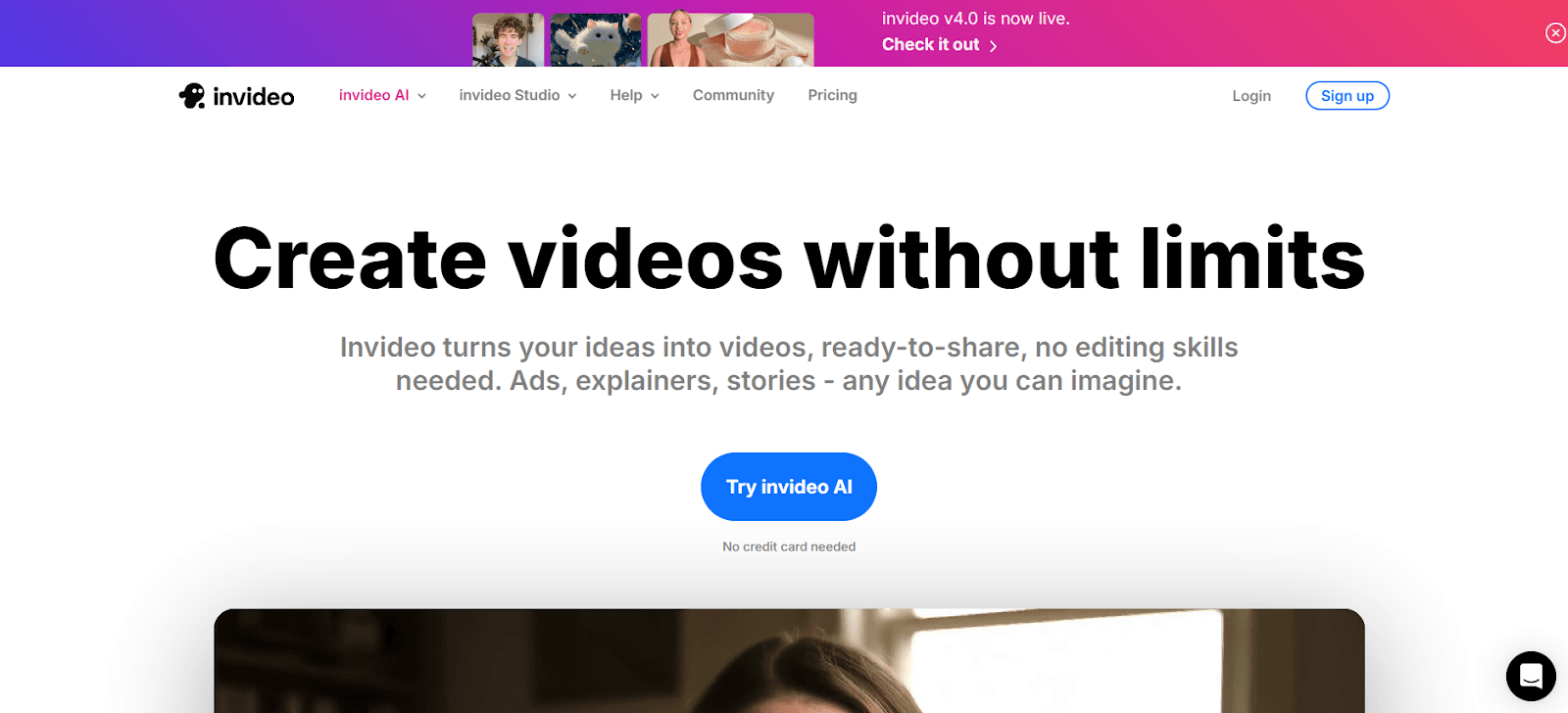
InVideo AI helps you go from script to share‑ready video with no editing skills needed. Simply enter your copy, and its AI generates a comprehensive storyboard with scene suggestions, stock media, and voiceovers.
Key features:
Auto text‑to‑video: Generate a scene-by‑scene storyboard from your script in seconds.
5,000 + templates: Pick from thousands of mobile‑optimized templates for ads, social posts, and more.
Drag‑and‑drop editor: Tweak text, swap media, or apply your brand kit with one‑click shortcuts.
Real‑time collaboration: Invite teammates into your project and work together via multiplayer editing.
How it works:
Log in and choose the “Script to Video” workflow.
Paste your ad script and pick vertical, square, or landscape format.
Let AI generate your first draft storyboard.
Refine scenes by dragging elements, replacing stock clips, and adjusting text.
Collaborate live with teammates to add comments and finalize edits.
Export your ad as MP4 or grab a shareable link.
These tools enable you to create high-quality UA ads more quickly, using fewer resources, allowing you to test, launch, and scale without delays.
Picking the right tools is only half the job. Making the most of them depends on how you plug them into your existing workflow.
How to Integrate AI Tools into Your UA Workflow
To make your ad creation faster and wiser, weave AI into each step of your process:
Audit your creative process and asset library: Take stock of your current ad formats, copy decks, image files, and video clips. Note which styles and messages have driven the most installs. This provides a clear baseline before you add AI-powered steps.
Choose two or three complementary AI tools: Pick one for generating or refining your ad text (for example, a prompt‑based copywriter), one for video editing or asset creation, and one for performance scoring. Using tools that serve different purposes helps you cover every angle without overlap.
Run small A/B tests on each tool’s output: Compare AI‑generated ads against your top‑performing ads. Launch a handful of variations to see which headlines, visuals, or video edits resonate most. Keep these tests tight (no more than 5–10 variants) so you can quickly spot winners.
Feed performance data into an AI analytics platform such as Segwise: Connect Segwise directly to your ad networks and MMPs to automatically import your A/B test results and live campaign metrics, with no manual uploading or code integration required. Its creative analytics AI agent automatically tags elements, such as backgrounds, calls to action, and emotional hooks. It then shows you which components drive installs and which ones lag, all without manual tagging or engineering work.
Scale your winning ads across full‑funnel campaigns: Once you identify top performers, roll them out to broader audiences across your chosen ad networks. Continue to monitor via your AI analytics platform and let automation allocate the budget to the most effective ads in real-time.
By folding AI into each of these steps, you’ll speed up your creative process, sharpen your messages, and pick the highest‑performing ads, all with less manual effort.
Even with the right tools and setup, results can vary depending on how you manage the output. Here are a few key best practices to consider.
Also Read: How AI Is Revolutionizing Mobile User Acquisition in 2025
Best Practices and Pitfalls for AI-Generated UA Ads
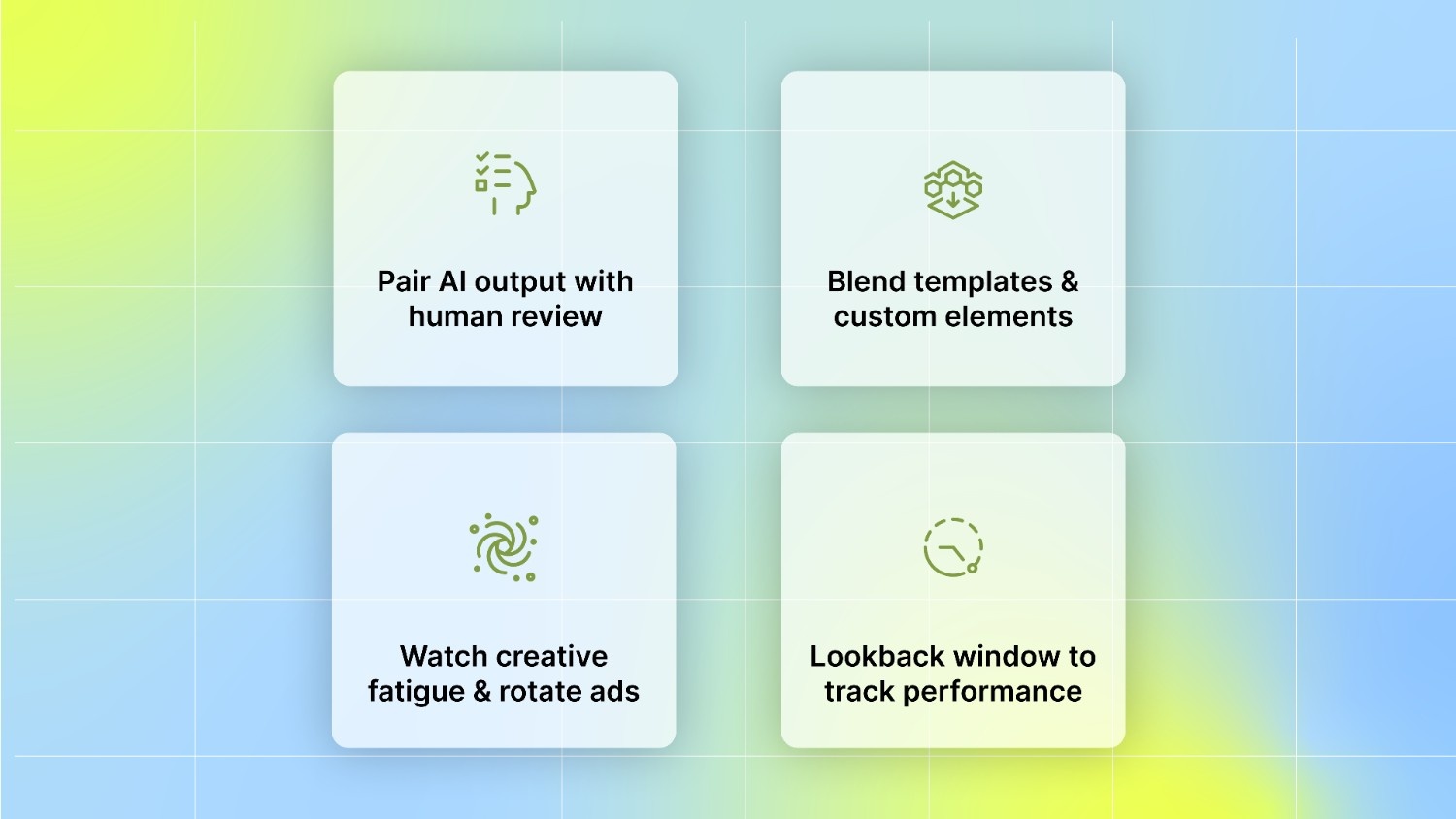
When using AI to build your ads, keep these tips in mind:
Always pair AI output with human review: AI can produce solid drafts, but human oversight is necessary to ensure your brand tone remains consistent and compliant with your brand's guidelines. Think of AI as your writing partner, not the final decision maker.
Blend templates with custom elements: Templates speed things up, but relying only on them can make your ads feel flat. To stand out, incorporate unique copy or visuals that speak directly to your players.
Watch for creative fatigue and rotate ads smartly: They can become stale quickly. Industry best practice is to rotate new AI versions every 1–2 weeks, or once the frequency becomes high, similar to what UA pros recommend for mobile campaigns.
Use a lookback window to track performance fairly: Standard UA teams typically use a 24-hour lookback to measure installs and ROI. Extending that makes sense only for live ops promos that reliably draw longer install windows; data should always guide this decision.
Utilizing these checks and balances ensures your ads remain fresh, on-brand, and compelling, while maximizing the benefits of AI tools in 2025.
Also Read: Building A Winning Creative Strategy: A Step-By-Step Approach
Conclusion
The most effective user acquisition strategies, particularly when leveraging AI tools for targeted ads, rely on three key factors: the rapid creation of diverse ad types, real-time performance updates, and the automatic adjustment of spending to optimize results. When you combine dynamic creative optimization with proactive dashboards and seamless API connections, you free your team from manual chores and keep campaigns lean and responsive, whether you’re rotating new visuals, tweaking copy, or reallocating budget to top‑performing segments.
To put this into action, Segwise offers a Free Competitor Tracking Tool that monitors up to five competitors' Meta ads. It updates daily, highlighting new ad launches and showing you which creatives are trending, all in one clear view. You simply add your competitors’ Meta Ad Library URLs, and Segwise continuously scans and aggregates their live campaigns, saving you over ten hours a week and helping you spot winning strategies before they scale.
Ready to stay ahead? Start a 14‑day free trial.
FAQs
1. What are AI tools for user acquisition ads?
AI tools for UA ads are software applications that utilize machine learning to create, test, and optimize ad creatives such as images, videos, and text to enhance campaign performance and reduce costs.
2. How do AI tools improve ad targeting?
These tools analyze user data to predict which individuals are most likely to engage with or install your app, enabling more precise ad placement and timing, and thereby improving return on ad spend.
3. Can AI tools automate A/B testing for ads?
Yes, AI platforms can automatically run multiple ad variations simultaneously, track their performance, and reallocate resources to the top performers without manual intervention.
4. Are AI-generated ads compliant with privacy regulations?
Modern AI tools are designed to comply with privacy standards, such as Apple's SKAdNetwork and Android's privacy manifest, ensuring that ad campaigns adhere to data protection laws and regulations.
5. Do AI tools support various ad formats?
Many AI platforms offer end-to-end creative solutions, enabling the generation of multiple ad formats, including short videos, playable demos, and static images, within a single interface.
Comments
Your comment has been submitted successfully!